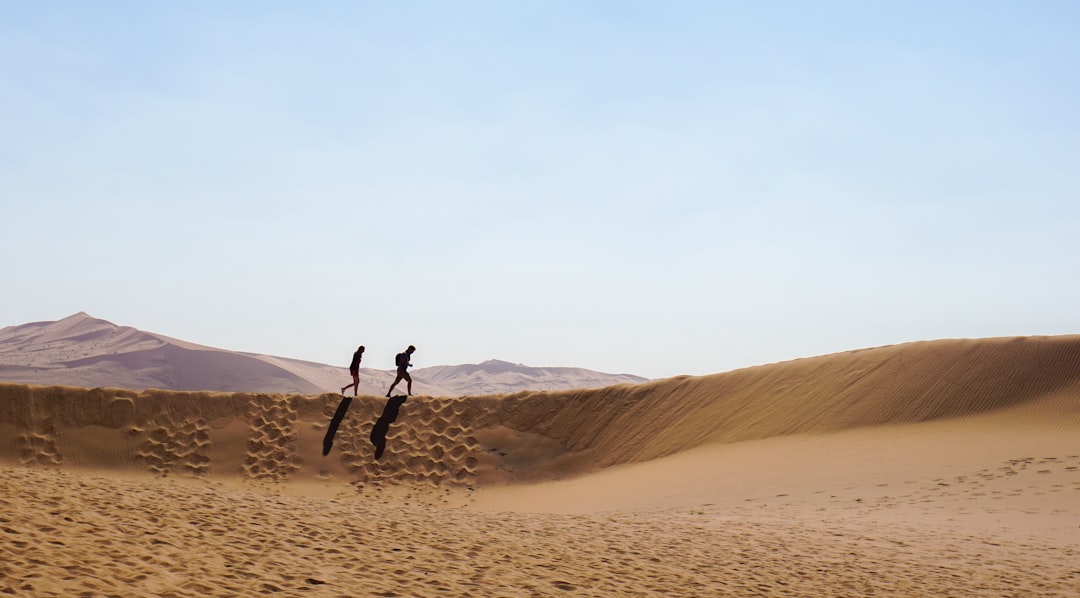The Secret to Our Species Success
Speed and intensity do not guarantee progress in pursuits that are worthwhile
It always seems impossible until it is done
Nelson Mandela
For a long time, it was believed that humans’ ability to run did not play a large role in our evolution because other mammals were much faster than us.
However, a landmark paper in published in Nature in 2004 investigated humans’ capabilities as endurance runners instead of sprinters and found that our ability to effectively run long distances was a key piece of our evolution and survival.
Endurance running was critical because it enabled persistence hunting.
Animals like antelope and deer could easily run away from us when we approached them because they are so much faster than we are, but they don’t have the ability to sustain that pace for very long. Humans have a much slower top speed, but we can sustain low-level efforts for a very long time, giving us the ability to chase down these animals over many hours until they reach a point of complete exhaustion.
Persistence hunting allowed us to go after much bigger animals and get bigger rewards for successful hunts.
The Tipping Point
The key to this strategy is pacing. Neither walking nor sprinting would have allowed us to win these hours-long battles. Too slow and the animal will get away, too fast and we’ll run out of energy.
Our bodies have two different energy systems: aerobic and anaerobic.
Our bodies begin by using the aerobic system which uses oxygen for fuel. As exercise becomes more strenuous we’ll continue to utilize more and more oxygen until we reach a tipping point. At this point we need more energy than oxygen alone can supply so we begin to use the anaerobic system to pull energy out of our muscles.
Persistence hunting required a pace that was vigorous, but sustainable.
Our ancestors figured out long before modern science confirmed that the ideal pace for endurance efforts is just before the tipping point from aerobic to anaerobic.
This pace meant we were moving as fast as possible while using only oxygen to fuel ourselves.
While long-distance runners have treated this training method like a religion for years, the same mindset is beneficial just as effective in every other area of life as well.
Embracing Persistence as a Strategy
Speed and intensity will not help us accomplish worthwhile pursuits.
Meaningful relationships can’t be created in a frenzy of effort over a few weeks or months. They take years of moderate but intentional efforts to grow and solidify.
Successful careers aren’t created from a few months of 12-hour days. They are created through years of consistent and valuable efforts all while avoiding burnout.
There are plenty of get-rich-quick schemes, dating apps advertising love at first swipe, and fad diets or exercise programs in the world today. All of these are the equivalent of trying to beat an antelope in a 100-yard dash. It’s never going to work.
To catch an antelope we need a long-term view. We need to prioritize sustainability over intensity.
Although the antelope may initially run away and disappear from sight, if we persist and trust in our ability to outlast it, we will eventually begin to close the gap. Achieving worthwhile pursuits starts with a level of effort that may feel pathetically easy at first. Over time, it gradually becomes more challenging but never tires us out to the point of giving up.
Are there situations where we should stop and rest or opportunities that we need to sprint to grab before they’re gone? Of course. However, accomplishing things that are worthwhile requires an overarching strategy of persistence.
Just as our ancestors leaned on persistence to hunt worthwhile prey, we can find a sustainable level of effort that allows us to avoid burnout, outlast the competition, and achieve unlikely success in the pursuits that matter most.
Prompts
Do you have a tendency to overexert yourself and burnout or reserve energy without making progress?
Do you feel like you’re falling behind in any areas of your life? Are the people you’re comparing yourself to sprinting towards burnout or do you need to give more effort?
Consider the most important pursuit in your life today. What does a persistent sustainable pace look like in this area of life?
Deep Dive
Endurance running and the evolution of Homo
Published in Nature by Dennis Bramble and Daniel Lieberman, this article details the evolutionary impact endurance running had on our species.
Born to Run - Christopher McDougall
An incredible book detailing learnings from an ancient tribe of runners who run for hundreds of miles without injury.
Thanks for reading! I’ll see you next Sunday.
Kevin



